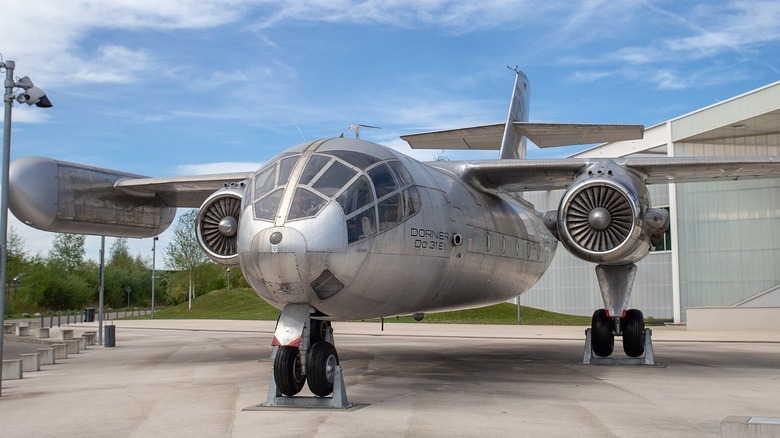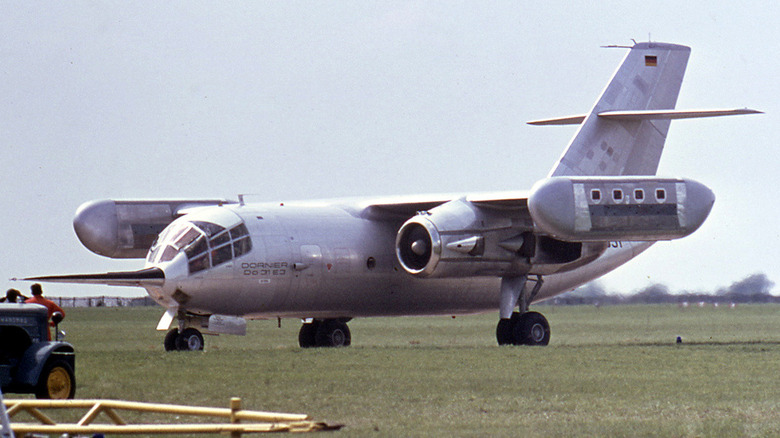This Incredible Jet-Powered VTOL Is The Only One Of Its Kind
When someone mentions vertical take-off and landing (VTOL) jet aircraft, the Harrier "Jump Jet" immediately springs to mind — and with good reason. The AV-8B Harrier is a proven ground-attack aircraft that was indispensable to the United States in both Gulf Wars and other NATO conflicts. What the Harrier lacks is the ability to carry cargo or people, aside from its pilots.
In the 1960s, West German aircraft manufacturer Dornier built its own little-known VTOL jet, and this one could transport people — 36 of them, to be exact. The project, called the "Do-31," was undertaken with the encouragement of the German Air Force, who was concerned that an attack on its airfields by the nearby Soviet Bloc could render traditional aircraft inoperative. Germany was looking for a high-capacity workhorse that could be stored and flown from unconventional locations, potentially including the nation's famous Autobahn roadways.
The Do-31 utilized a vectored-thrust Rolls-Royce Pegasus engine similar to the Harrier's, except the Do-31 required a pair of them to the Harrier's one. The main engines were mounted in traditional under-wing nacelles like modern jet turbofans. Each wing tip housed an additional four Rolls-Royce RB162 engines, specially created for the Do-31.
These eight small supplementary engines not only provided the additional thrust that the Do-31 required to take off, but also doubled as a safety precaution in case of a main engine failure.
[Featured image by Clemens Vasters via Wikimedia Commons | Cropped and scaled | CC BY 2.0]
It was successful, but too expensive
In spite of looking like something from a science-fiction film, the Do-31's flight test were successful. Beginning in early 1967, all manner of maneuvers were undertaken: from its signature vertical takeoff and hovering, to conventional horizontal flight, and even flying backward.
According to the aviation magazine Hush-Kit, "Payload capability was 36 fully equipped troops, or 'two or three' Jeeps, or palleted freight, up to a maximum of 11,000 pounds, and a range of 1,100 miles was expected with maximum payload." Maximum speed was approximately 710 Km/H (440 MPH).
The jet's popularity culminated at the 1969 Paris Airshow, where it amazed the general public and caught the attention of several American manufacturers such as Convair; some of whom even saw potential for civilian use, but ultimately no deal was struck. Although the test aircraft had met its goals, the project was nonetheless abandoned in 1970. In the end it was just too expensive, too fuel thirsty, and too complex — requiring a whopping 10 engines, only two of which were actually used in forward flight.
A total of three Do-31s were built: one static testbed, and two flyable prototypes. The whereabouts of the non-flying airframe is unknown, but the two flying examples are both in German museums. One is at the Dornier Museum in Friedrichshafen, and the other can be found at the Flugwerft Schleissheim near Munich.
[Featured image by Ralf Manteufel via Wikimedia Commons | Cropped and scaled | GFDL 1.2]

